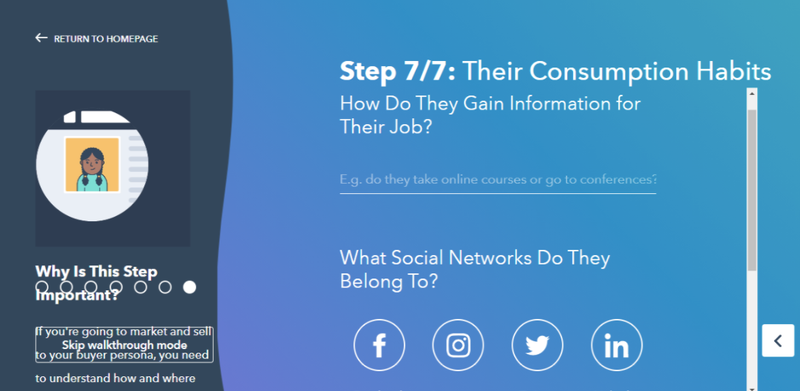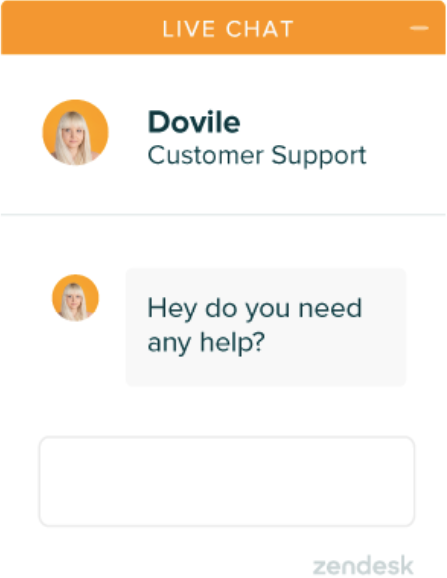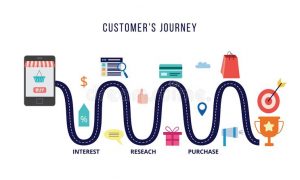Here’s the hard truth: You can use the best and most expensive sales tools and still fail to win new customers or clients. It all boils down to how you engage with people. Your offers need to be relevant, and your marketing materials need to resonate with their circumstances.
That’s why you need to build a customer journey map. It helps you to understand your customers better and increases the likelihood of a customer interaction turning into a sale.
Essentially, mapping the customer journey takes the guesswork out of knowing what your audiences want so you can give them exceptional customer experiences. In this guide, we’ll look into the nuts and bolts of building the customer journey.
Overview: What is the customer journey?
The customer, or client, journey is the overall experience people have with your business. It includes interactions through various devices, channels, and touchpoints that your brand uses across each stage of the customer lifecycle — from awareness to loyalty.
The customer journey gives you a roadmap of how your audiences see your business, leading you through every customer point of contact. This helps you identify weak points and gaps in your marketing and sales messaging and strategies.
4 phases of the customer journey
Each customer journey can vary depending on the dynamics of a business. However, these are the four general phases of how a typical customer journey looks.
1. Awareness
You’re dealing with two types of people in the awareness stage — those who are aware they have a problem but don’t know the solution or people who don’t even know they have a problem.
During this stage, it’s not advisable to tell your audiences to take out their wallets to make a purchase. Hard selling is better suited for the next stages. You’d be better off providing relevant information and steps on how to solve your customers’ problems.
You can also educate them about how frustrating their situation could become if they don’t solve their problems right now. Talking about their “what ifs” helps transition them to the next stage of the customer journey.
2. Consideration
Your goal at this stage is to strengthen your customers’ association of their problems with your brand as the solution. This is the stage where your prospects do their research and read product descriptions and reviews, etc.
They are likely to compare your product or service with your competitors’, so you need to establish what makes your offering a better solution. To win at this stage, you need a compelling and unique selling proposition.
3. Conversion
This stage of your customer mapping journey is all about turning your web visitors into paying customers. At this point, your audience should have a clear understanding of what their problems are, who you are, and why your products or services are worth their money.
Your page needs to have a clear call to action (CTA). You could ask your audience to buy, download your coupon, or sign up for a free trial, among potential CTAs.
Some of the best content pieces you can publish during this stage are product comparisons and reviews, discount offers, and case studies.
4. Retention
A sale shouldn’t be the end of your customer relationship. After purchase, keep your customers hooked on your brand by employing tried-and-tested customer retention strategies.
A carefully crafted and executed customer retention strategy deepens your customer relationship. It transforms your shallow transactional relationship to something more meaningful, such as brand loyalty.
Winning your customers’ trust and loyalty will pay dividends for your business since you can leverage repeat business. What’s more, loyal customers are likely to become brand advocates, allowing you to generate more sales through word-of-mouth marketing.
How to create a customer journey for your business
Provide seamless customer-centric experiences with your brand with these proven tips on mapping a customer journey.
1. Create buyer personas
Understand who your customers are by creating buyer personas. This helps you get into your customers’ shoes and learn their shopping behaviors, interests, and preferences. While each customer segment is unique, creating buyer personas will give you a general direction on how to map an effective customer journey.
HubSpot’s Make My Persona tool lets you generate buyer personas for your customer journey marketing and sales initiatives. To develop your buyer persona, choose an avatar, specify your prospects’ traits, career, job characteristics, consumption habits, and goals.

It helps to create multiple buyer personas to have clearer representations of your prospects at varying stages of the customer journey. This helps you distinguish between someone who’s been researching the market for some time and someone who is only beginning to think about solving a specific need. This allows you to deliver the right messaging to the right people at the best time.
2. Uncover customer objectives and pain points
Uncover your prospects’ goals and frustrations at each phase as they go through the customer journey. Depending on the phase they’re in, they could be searching for more information about their problems or they could be looking for discount coupons because they’re ready to make the purchase.
Below are several ways to uncover your customers’ objectives and pain points:
• Run surveys or interview various customer segments
• Study customer support transcripts and emails
• Gather user testing feedback
Having a solid grasp of your customers’ goals and frustrations enables you to plot a customer journey that’s more logical and effective and, therefore, more compelling.
3. Determine customer touchpoints
Customer touchpoints refer to any interaction between your brand and customers. Take note of when and where these interactions occur so your means of delivering content and engaging your customers become more effective.
Determining customer points of contact can improve your customer communication strategies since you can pick the best communication channels to engage your customers. It allows your business to be present where your customers are.
4. Plot the customer journey
Now that you know who your ideal customers are, their objectives and frustrations, and the points where they interact with your brand, it’s time to plot your customer journey.
Pay very close attention to the actions your customers might make at each phase and the elements that affect their actions. Avoid overwhelming your customers by telling them to do several things at each phase.
Each stage should push the customers to follow through on the journey map you created. After educating them about your features and how your product or service can solve their problems, the next step on your journey map should be to urge your customers to make the purchase — not to share articles on their social media accounts.
If your customers are still in the awareness stage and have not even transacted with you, it wouldn’t make sense to send them marketing materials meant for those in the retention stage as if they were long-time customers. You’ll alienate them by doing so.
5. Improve your journey map
Look for gaps in your journey map and then address them. For instance, your journey map could highlight flaws in your customer service, such as slow response times. This could prompt you to look for alternative customer service software that allows your team to reply promptly and manage customer demand more quickly.
Zendesk lets you connect your messaging channels or add a chat option on your website, giving your team the ability to talk and respond to customers quickly and in real time.

Monitor your customers’ behavior at each phase of your journey map to uncover inefficiencies or areas you can improve. Be extra mindful of stages where your leads fall off or your customers click away. Chances are they didn’t leave your marketing funnel for no reason. Something triggered them to leave, and your job is to find that something and address it.
3 benefits of creating a customer journey for your business
Below are several advantages of developing a customer journey that can improve your buyer retention and increase your customer lifetime value.
1. Fine-tune your customer experience
During the customer journey analysis, you’ll uncover how your customers move from one touchpoint to another. This helps you identify service or communication gaps in your map.
For example, you might discover that your website’s mobile version has too many purchase process steps, and reducing it could lead to increased sales. Also, if there are roadblocks to customers reaching your salespeople right before they’re ready to make a purchase, analyzing your customer journey will help you see the gap. This allows you to refine your process to remove that roadblock and avoid losing customers.
2. Predict customer behavior
Not having a customer journey map is akin to leaving a horse out on a grassy field — it can aimlessly run amok. Plotting a journey map, however, is like putting a horse on a racetrack. The only viable direction is forward.
You wouldn’t want your customers to aimlessly run amok, would you? You want to direct them to take that one action that aligns with your campaign goals, which are often increased sales.
By creating a customer journey map, you plot the trajectory or the next steps of action your customers will make while engaging with you and your business.
3. Nurture a loyal customer base
An improved customer journey map leads to better customer experiences. Since you’re meeting consumer expectations, their satisfaction and loyalty will naturally increase.
A clear customer journey map also improves your internal team collaboration, leading to higher employee satisfaction. It gives your staff a clearer direction about how to turn passive audiences and site visitors into paying and loyal customers.
Additionally, a customer journey map helps your employees better understand how to improve the process and identify the areas that require attention to develop a more memorable and stronger customer experience.
Start building a seamless customer journey
Creating and developing a customer journey map takes a lot of time and effort, but the benefits far outweigh the resources you expend. Build and nurture a customer journey to understand your customers better, know what they want, and refine your marketing and sales efforts to address their needs.
The post A Small Business Guide to Fostering the Customer Journey appeared first on The blueprint and is written by Jimmy Rodela
Original source: The blueprint






